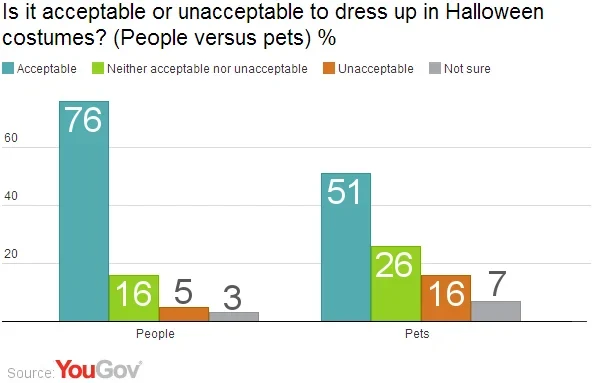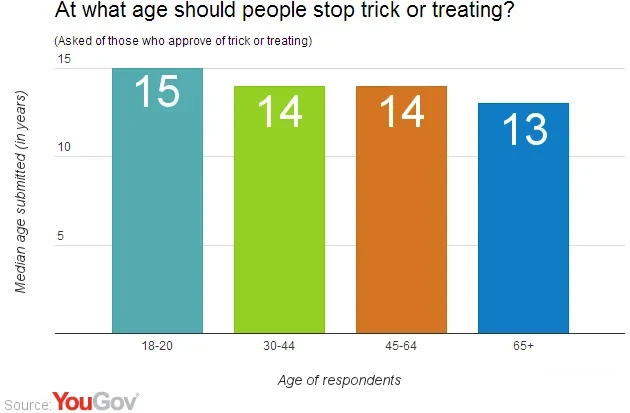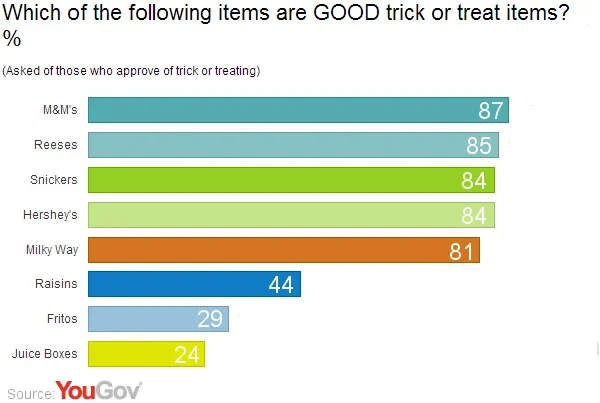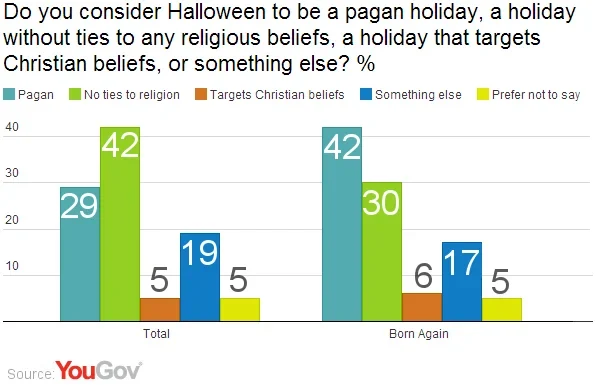Many think trick-or-treating is only acceptable for the younger crowd, while most people think that trick or treating was safer when they were kids.
Americans much prefer a treat to a trick, and it appears many are expecting knocks on their doors this Halloween. For most, that’s just fine. More than two in three Americans say there is trick-or-treating in their neighborhoods, and even great numbers of people in a pre-Halloween YouGov poll approve of both trick-or treating and of dressing up for Halloween. Most people even accept dressing up your pets for halloween!

There is no difference between young and old when it comes to their feelings about the appropriateness of dressing up for Halloween, but older adults are less accepting than younger adults when it comes to dressing up household pets. More than half of those under 45 say it’s fine to dress up a pet – but less than half of those 45 and older do.
While dressing up for the holiday is okay with most Americans, there is an age limit when it comes to trick-or-treating. 79% of American approve of trick-or-treating, though many of them think there’s a time to stop. How old is too old? Many say that you're too old when you become a teenager. Half say you should stop before you are 14; but just as many think you can trick-or-treat even longer. For those under 30, the median age to stop is 15; for those over 64, it’s 13.

Halloween, it appears, gives people license to give and receive some things that might not be the healthiest for them. And there is clearly a predisposition towards candy as the proper Halloween treat. It seems Halloween treats should be sweet, not salty. The most popular treats are a variety of candy bars, and the least popular include juice boxes, raisins and Fritos.

There is trick-or-treating everywhere, but more in the Northeast and Midwest than in the South and West. There are few Halloween grinches, although religion and geographic location seems to impact how one feels about Halloween.
Halloween is sometimes viewed as a pagan holiday – and that’s especially the case for a plurality of those who describe themselves as born-again. Nationally, 29% view Halloween as a pagan holiday; 42% of born-again Christians do.

Although born-again Christians are more likely to think Halloween is pagan, majorities of them still approve of trick-or-treating – and of dressing up in costumes. But a lack of religion makes a person like Halloween even more. Atheists and agnostics are more likely to favor trick-or-treating – and they especially don’t think healthy treats like raisins and juices make good Halloween treats.
There is one thing most Americans agree on – treat and treating isn’t as safe as it used to be.

Women are particularly worried about safety: 59% of them believe it is less safe in their neighborhoods to trick-or-treat today.
However, Americans personally would opt for a treat. Given a choice between “trick” and “treat,” only 14% choose “trick.”









